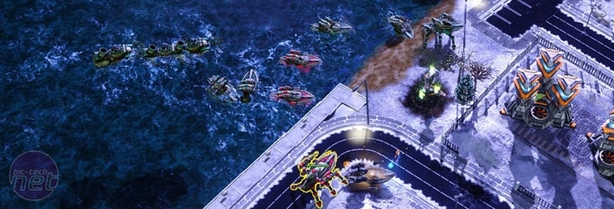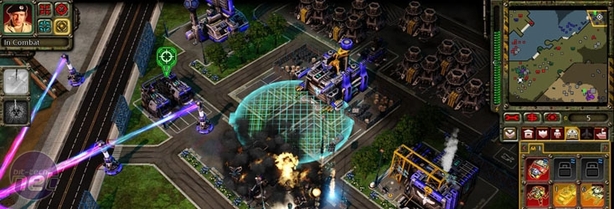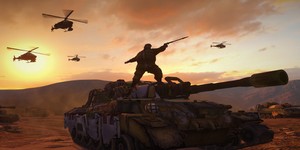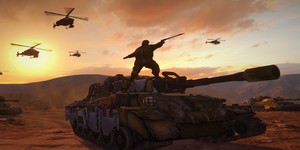
Gameplay
So, as always the gameplay starts with players having to choose a campaign. You’ve got three choices – the Allies, Soviets or Imperials and each one has an array of special powers and areas it is strong in.The Allies for example may no longer have Einstein and vast nuclear powers on hand, but they do still have some time-based technologies. They have Chronocopters that can freeze enemy units, a capable airforce and the wiles of Jenny McCarthy as Tanya.
The Soviets meanwhile have Tim Curry’s excellent acting abilities, backed up by a powerful navy and an arsenal of dangerous space-based attacks. Years of launching satellites and space stations has given the Russians command of hundreds of improvised bombs that they can funnel onto their foes.
The Empire of The Rising Sun however is a more complicated foe. It excels at nothing in particular, but has an incredibly versatile set of units and an infantry with excellent camouflage and psychic powers.
The Imperial army doesn’t have overly powerful second attacks, but its armour is based on Japanese mecha culture and can quickly transform from anti-infantry tanks to anti-tank aircraft. They’re like transformers, able to move over any terrain in a but vulnerable to certain types of attacks.
Of all of these forces, the Soviets and the Allies are obviously the simplest to get to grips with, mainly because EA has ported over a roughly similar version of the standard tech tree. Build a Barracks, get infantry. Build a War Factory, get tanks. Build an Airfield, get helicopters. Build a Battle Lab, get advanced units.
While you’re doing this of course, you’ve got superweapon points ticking up in the bottom left of the screen that you can trade in to use your more powerful weapons. As soon as you have one point you can buy a basic super weapon, but you can also save them up for more powerful attacks.
There are three different types of super-weapons and each one has many levels, so choosing the right ones is important. Do you go for a standard Orbital Dump now and wipe out a turret or two, or save up for the higher levels and drop an entire space station on the Allies’ Construction Yard, crippling their base?
Fortunately, players don’t always have to fret themselves wondering if their opponent is going to drop a gigaton payload on their own bases though – they’ve got back-up to help take a fair share of the fire and to help rebuild.
Co-operative play is one of the new features in Red Alert 3 and it runs through the entire game. All levels and all campaigns have co-op built into them so that players can team up if they need a little direct assistance for a level. If you’re struggling to conquer an enemy base and find yourself unable to launch three attacks at once (as we often do) then having a human player lend a hand and assault the flanks can be a positive boon.
If you’re lacking a second player though, or if your friends have different political ideas and refuse to play as the same faction as you then an ally AI will step in an take over the role for them. In the singleplayer campaign this is even anticipated and built into the story as the game takes for granted the fact that most people won’t try co-op.
As such, your co-op ally is introduced as a new character, albeit one who doesn’t have many lines. Using the control panel at the top left of the screen you can tell your ally where to focus their attacks or instruct them to focus on building defence instead. You can tell them to focus on critical targets, or to attack general areas – something which is especially helpful for certain strategies.

MSI MPG Velox 100R Chassis Review
October 14 2021 | 15:04











Want to comment? Please log in.